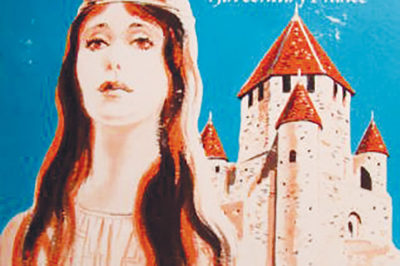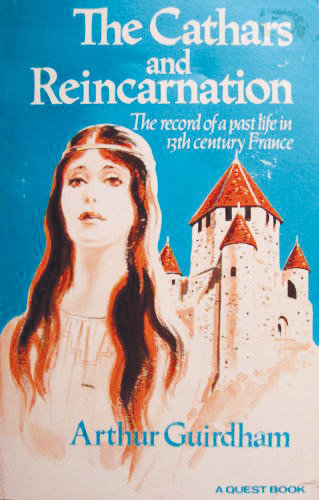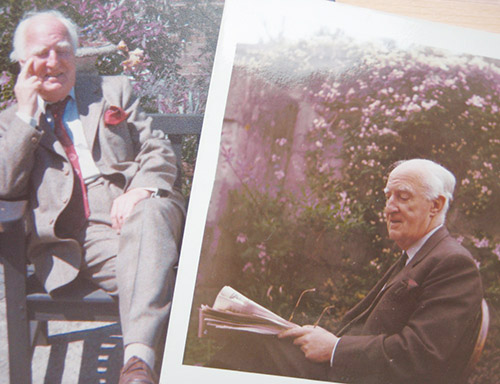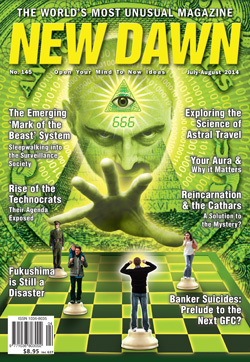From New Dawn 145 (Jul-Aug 2014)
The Cathars remain an enigma. An austere, world-denying sect, they were nevertheless associated with a remarkable cultural renascence in the southern France of the twelfth and early thirteenth centuries. Beloved in the regions that supported them, they were popularly known as the bonshommes, the “good men.” Labelled by the Catholics as “the great heresy,” Catharism was so formidable a rival that the church formed the Inquisition to crush it.
Who were the Cathars, and where did they come from? The name comes from the Greek katharós, meaning “pure” or “clean.” Their origins are obscure, but they appear to have some connection with sects that stretched back at least to the time of Christ, with exotic names such as the Bogomils, Paulicians, Massalians, and most famously the Manichaeans. I cannot sketch out this history here (I have tried to do so in my book Forbidden Faith: The Secret History of Gnosticism), but it is probably safe to say that some kind of continuous link connects all these groups spanning the first millennium of the Common Era.
The chief feature these sects all shared was dualism. This word has many meanings. Here it means the belief in a cosmos that is made up of two opposing and more or less equipotent forces: good and evil, light and dark. This polarity is cosmic: it began with the universe and will end only when the universe ends. Our world, the world of matter, is the creation of the dark forces; the light is imprisoned and alien here.
Note how this differs from conventional Christianity, which teaches that the world, including the world of matter, is fundamentally good. Its evil arises from the Fall of man in the garden, prompted by that old serpent, the Devil. By the old Catholic axiom, natura vulnerata, non deleta – “nature was wounded but not destroyed” by the Fall.
But the differences are not quite as clear-cut as they may seem. Mainstream Christianity – by which I mean practically all of the churches that call themselves Catholic, Orthodox, or Protestant – has its own strain of pessimism and world-denial. One obvious example is the pathological hatred of the body that Christianity has shown almost since its earliest days. Conventional Christianity may not teach that the world is evil, but it frequently acts as if it is. And while Christianity claims that the sole and ultimate power is good, it also makes the Devil and his minions seem very nearly as powerful. Some scholars even say that Christianity is semidualistic.
Moreover, if Catholic Christianity and its offspring teach that this world is fundamentally good, why have they so often cast shadows of fear, gloom and barbarism? And if the Cathars were so gloomy and world-renouncing, why was the culture they influenced the most – Languedoc in the twelfth and thirteenth centuries – the most prosperous, open, tolerant, and cultivated society of medieval Europe? What did the Cathar have to do with this efflorescence?
You can read a great deal about the subject and still be left groping for an answer. The scholarly books, however serious and exhaustive, offer no real clue to this puzzle; the authors themselves often seem baffled by it.
A Psychiatrist’s Past-Life Memories
The most vivid and plausible picture of the Cathars comes from an extremely strange source: past-life memories as assembled by a twentieth-century British psychiatrist.
Arthur Guirdham (1905-92) was born in Cumbria, England, the son of a steelworker. By sacrificing the education of his sisters, his parents were able to give him a decent enough education so that he was able to attend the University of Oxford. Eventually he qualified as a psychiatrist. He was practicing in this capacity in 1962 when he met a patient that he calls Mrs. Smith. His first words to her (as he would be reminded later, to his own surprise) were “Have I seen you before?”
Mrs. Smith, an otherwise normal woman in her early thirties, came to him with a complaint about a recurring dream that had been disturbing her: “A man entered her room from the right side. She was lying on the floor. His approach filled her with terror.” Although in itself “the dream was not of any particular interest,” it struck a chord in Guirdham. He had been having a similar recurring nightmare in which “a tall man approached the place I was sleeping. He came from behind me on the left. Sometimes he bent over me. I felt rigid and speechless with panic.” Although he could not remember exactly when his nightmares had started, he was certain about when they ended: it was around the time he encountered Mrs. Smith. Moreover, as he later learned, her dreams of this kind stopped as well. “Is this significant?” he wrote. “Not in itself but… I feel that my nocturnal visitor was the same man who disturbed Mrs. Smith’s dreams.”
For the next year, curious coincidences and synchronicities continued to occur linking Guirdham, Mrs. Smith and the Cathars. Then, in a session in December 1964, Mrs. Smith made a remark to the effect that “love was an immensely creative force and that through it mankind would be bound together.” She attributed this statement to Guirdham himself, even though he was sure he had never said any such thing.

Mrs. Smith then revealed a startling fact. When she was a teenager she had written a novel, which she later destroyed, about life in a medieval women’s community and a man she loved named Roger.
Two months later, in February 1965, Mrs. Smith told Guirdham something still more astounding: he himself had been Roger, the man she loved, in a past life. “We were from a very poor family but you were of noble birth. I fell in love with you then, and my father said I must never meet you again – you were not of our class and what was more important to him, you were not of our faith. I refused to be parted from you, and was eventually excommunicated. I went to live with you. We weren’t married. You told me that if anything should happen I should go to Fabrissa.” But she was not sure whether this was a person or a place.
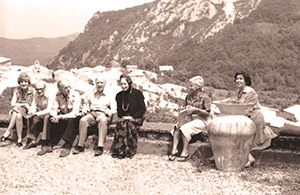
Thus began a strange series of revelations, dreams and encounters, combined with serious historical research into the Cathar saga. It developed that a certain Fabrissa de Mazerolles was a well-known protector of heretics (i.e., Cathars) in early thirteenth-century Languedoc. The identity of the man in Guirdham’s and Mrs. Smith’s dreams also became clear: he was Pierre de Mazerolles, Fabrissa’s nephew. Although Mrs. Smith, or her previous incarnation (named Peirone or Puerilia), was frightened by her memory of Pierre, he had not meant to harm her. He had come to announce gleefully that he had committed murder.
This crime, which took place in Avignonnet in 1242, is well-documented. It was of two Inquisitors who had been sent by Rome to ferret out Cathars. This did not signal the start of the great persecution launched by the papacy (which had begun in 1209). But it did provoke a reprisal that ended in the climactic siege of Montségur in 1244, the most famous episode in the Cathar epic, which ended with two hundred parfaits being burned alive, and marked the beginning of the end for Catharism as a movement. (Pierre de Mazerolles, incidentally, was not a Cathar; he was motivated by greed and by the sheer joy of murder.)
Guirdham’s story, told in his book The Cathars and Reincarnation, continues with many ramifications. He does not tell it well. His narrative lurches back and forth between Mrs. Smith’s revelations, his own experiences, actual historical events, the love story of Roger and Peirone, and the teachings of Catharism. Many other characters are introduced, a number of whom can be identified from historical records but who begin to blur together in the narrative.
Of the two main characters we learn that Roger was imprisoned and died, probably of tuberculosis, while awaiting interrogation by the Inquisition. Peirone suffered a more dramatic fate, and one of the most memorable passages of Guirdham’s books gives her first-person recollection of being burned at the stake:
The pain was maddening. You should pray to God when you’re dying, if you can pray when you’re in agony… I didn’t pray to God. I thought of Roger and how dearly I loved him. The pain of those wicked flames was not half so bad as the pain I felt when I knew he was dead. I felt suddenly glad to be dying. I didn’t know when you were burnt to death you’d bleed. I thought the blood would all dry up in the terrible heat. But I was bleeding heavily. The blood was dripping and hissing in the flames. I wished I had enough blood to put the flames out. The worst part was my eyes. I hate the thought of going blind… I tried to close my eyelids but I couldn’t. They must have been burnt off, and now those flames were going to pluck my eyes out with their evil fingers.
As compelling as this is, does it stem from an overactive imagination? The answer lies in the historical veracity of many details in this bizarre story. Mrs. Smith knew many things that she could not have known from her conventional education; indeed some of them were not discovered until after her experiences.
Active Imagination or Real Memories?
One example is the colour worn by the Cathar parfaits (“perfect ones”). The parfaits were the elite, the few who had received the initiation known as the Consolamentum and who served more or less as a clergy. Most of the books say they always wore black robes. But Mrs. Smith remembers that Roger’s were dark blue. It was only several years after these revelations that Guirdham came across a statement in La vie quotidienne des Cathares du Languedoc au XIIIe siècle (“The Daily Life of the Cathars in Languedoc in the Thirteenth Century”) by the well-known scholar René Nelli that, although the parfaits had originally worn black, they often switched to dark blue as a disguise in times of persecution. Since Mrs. Smith’s memories were of those days of persecution, this would make sense. This detail had not appeared in print when she had her dreams. Nelli, whom Guirdham consulted, was so struck by the accuracy of her recollections that he told him that when in doubt about some detail he should trust the memory of the patient.
And the memory was considerable. Like many people of the era, Peirone/Mrs. Smith had a facility for remembering songs and verses that was much better developed than that of people today. She wrote down some of the songs she remembered that Roger had sung. She had transcribed them when she was a teenager. Moreover, some of her verses strongly resemble those in anthologies of medieval French poetry. She only knew a little French, which she had studied at school, and had no knowledge of Languedoc (the Romance dialect spoken in that region) or of medieval French. But, for example, in her verses she uses the word foliete for “foliage.” The French equivalent, which she would have learned at school, is verdure, but the word in Provençal, a language close to that of Languedoc, is folhet.
Behind all this is a background of detail that brings a lost age vividly to life. Of Peirone’s house, she recalls, “It was little more than a hovel. One room, that’s all… I am sure there was no upstairs. The only furniture was a rough bench and a table. It was almost as dark inside as out, for the small window had no glass in it and was covered with a crude wooden shutter to keep out the elements.” She and her family slept in their clothes on the floor. Frequently she gives details about medieval life that Mrs. Smith knew nothing about, such as the custom of drinking diluted wine.
Beyond a certain point it is useless to argue about whether these are genuine past-life memories or not. Our age has forgotten that scepticism is not in and of itself a sign of intelligence. It would be more interesting to see what we can learn from these accounts, and how they supplement conventional sources on Catharism.
The Cathars: New Revelations
Let us begin with a question already asked: how, if the Cathars were such a dour sect, did they thrive in the free, open, joyous atmosphere of the Languedoc of the period? Guirdham’s answer is clear and sensible. The Cathar parfaits were extremely strict with themselves: they wore robes like monks, they ate no meat, they were celibate, and they fasted often. Those demands were only made of the parfaits. Unlike the Catholic priests of the time, the parfaits actually lived up to their vows; thus they won the affection of the people, and the nickname bonshommes. But ordinary believers – the croyants – were under no such obligations. The demands made on them were light.
Nor was Catharism as gloomy and world-denying as it has been painted. The Cathars, it is true, believed in covalent forces of good and evil, which existed from the beginning and would last until the end of the universe. They also believed that the world of matter was fundamentally evil (a case that is easy to make). But unlike the Catholics, they did not cling to the gloomy and improbable doctrine of eternal damnation. Guirdham writes:
In the Middle Ages people were dominated by the fear of Hell. Catharism to some extent dissipated this fear. If the world was regarded as being made by, or under the domination of Satan, it followed that one was entitled to regard this life as Hell. Considering that one got through it somehow, and that there were many compensations in the sunshine of the Languedoc and the Midi, the idea that the world was Hell was really an optimistic one. If this world is the worst Hell one has to put up with, it must have been, even at its lowest, vastly preferable to the perpetual damnation of the orthodox Christians of that epoch.
This view helps explain how the supposedly sombre Cathars were able to thrive in, and foster, the lively and cheerful civilisation of Languedoc. The world is evil, so one does not need to take it too seriously, and certainly there is no point in making things worse than they already are.
Another detail casts some light on the cultural impact of the Cathars: they put little stock in marriage. There was no Cathar wedding ceremony, and many Cathar couples lived in what the Catholics would call sin. It is clear from Mrs. Smith’s evidence that Roger and Peirone were not married either.
Courtly Love
This point explains another strange fact about the Cathar milieu: it was when the curious tradition of courtly love came into being. (Actually this was in the eleventh and twelfth centuries, earlier than the time of persecution that we have been discussing, in the thirteenth century.) Courtly love, a kind of intense love from afar that was usually unconsummated, was the inverse of marriage: it was often practiced between a man and a woman of divergent social classes, it was not for the purpose of having children, and it was, at least ostensibly, chaste.
Courtly love was also associated with the poetry of the troubadours, which had Cathar echoes of its own. Guirdham mentions the tradition that says the troubadour poets would wear a rose when singing songs with esoteric themes; when they did not, the songs were about ordinary human love. Denis de Rougemont, in his influential book Love in the Western World, argues that the troubadours invented what we now call romantic love. This view is hard to sustain. Greek lyric and Roman elegiac poetry show people in love much as they are today. But de Rougemont may be right to this extent: the troubadours, and the courtly love they celebrated, were the first (at least since Plato) to connect human love with divine love.
The Cathars’ indifference to marriage resembles the attitude of another religion that may be called world-denying. The Buddhists have no marriage ceremony as such. Monks do not marry a couple; the couple marry each other; a monk may bless the ceremony, but he does not perform it. This peculiar fact may have something to teach about world-denying religions and their fate in the world, particularly in the West.
Religion, whose name originates in Latin roots meaning “to bind back” or “to connect,” plays more than one role in society. It attempts to connect man with God, but it also has a social function. Religion holds society together; at least that is how it worked in the past. If, however, religion is to do this, it must take society’s concerns somewhat seriously. A religion that regards the world as ultimately rather unimportant is not likely to be enthusiastic about taking on the role of guarantor of the social order. This attitude may help explain why dualistic movements such as the Cathars and the Manichaeans never established any long-lasting dominance in societies and nations. It is true that Buddhism, which is also somewhat world-denying, has managed to establish itself, but it is striking that a number of Buddhist nations have continued to use native traditions – Shinto in Japan, Confucianism and Taoism in China – to continue to fill some social functions.
Bodywork, Herbal Healing & Plant Auras
Guirdham has much more to say about the Cathars in their context, informed by both Mrs. Smith and a woman he calls Miss Mills, who had similar past-life memories. But at this point we may turn to another dimension of Guirdham’s portrait: his own contact with discarnate entities who in their last lives on Earth had been Cathar adepts, including the important and much-honoured Cathar bishop Guilhabert de Castres (c.1165-1240).
These teachings, assembled in the final section of Guirdham’s book The Great Heresy, deal with subjects ranging from the properties of plants to reincarnation and intercourse with divine beings. These things do not, on the face of it, strike one as part of Catharism. On the other hand, they do not contradict what we know about the Cathars either. In their way, like the rest of Guirdham’s work, they serve to fill out its portrait.
The Cathar parfaits were, as we have seen, a kind of clergy; they administered the Consolamentum (the only sacrament they acknowledged), taught doctrine, and led services. But they had another important function: they were healers. Guirdham points out that one of Christ’s original commands to his followers was to heal the sick. The parfaits did this using a number of techniques, including what we today would call bodywork and administering herbs and tinctures. Guirdham also discusses the use of jewels in healing, although he acknowledges that they are not as useful for this purpose as they were in bygone ages, when people were more psychically sensitive.
Guilhabert also told Guirdham a great deal about plants. Plants have auras like human beings, and when, in certain instances, a person finds a certain plant, like a tree, to give off a healing quality, it is the result of this aura. Guirdham himself recalled the case of an old miner who was subject to periodic bouts of depression. At these times he would go off and sit under a particular roadside tree, and afterwards he felt better. But plants can have negative properties as well; some thrive on maleficent vibrations, including perhaps toadstools and fungi that thrive in dank underground cellars. Guilhabert makes the arresting remark that evil can insert itself in nature, citing as an example the lurid aniline-dye colours of recently developed varieties of roses. “The harsh colours bred into the roses were a flamboyant challenge to reinforce their attractiveness to man,” according to Guilhabert.
Some of these remarks are reminiscent of the ideas of the Austrian visionary Rudolf Steiner, who also spoke of the etheric bodies and auras of plants. This may not be a complete coincidence. Steiner laid claim to the heritage of the Rosicrucian brotherhood of the seventeenth century, and Guirdham suggests that the Rosicrucians may have been the spiritual descendants of the Cathars. “It is traditional,” he observes, “that the Rosicrucian movement arose in Germany in a family where a monk from Narbonne [in Languedoc] had been a tutor.”
A Secret Cathar Lineage?
Did the Cathars survive in any other form after finally vanishing from history in the early fourteenth century? Conventional scholarship says they did not. But there may be some evidence of underground Cathar survivals. In a persuasive book called The Secret Heresy of Hieronymus Bosch, author Lynda Harris suggests that the great Netherlandish painter and forerunner of surrealism may have been secretly a Cathar two hundred years after the faith supposedly perished. Harris’s argument is too intricate to go into here, but the facts that Bosch’s ancestral home was the town of Aachen, a former Cathar centre, and that many of his bizarre images have curiously heterodox implications, suggests the Cathars may not have perished as thoroughly as the Inquisitors wished.
The question keeps presenting itself to the minds of those who think about these subjects. These lost, half-forgotten faiths – the Cathars, the Manichaeans, the Gnostics – did they really die out completely? Did they survive sub rosa under other names, handed down through lineages of secret and untraceable initiations? Or do they reflect something that continually arises out of the depths of human experience? Guirdham suggests as much, writing, “Perhaps it is best to regard Dualism as analogous to a repressed impulse. It passes from memory but continues to exert its influence in different directions below the conscious level.” Perhaps, too, there is another answer, suggested in his books: the religions may vanish, but their adherents do not, and as they return in later centuries and in other bodies, the teachings and truths of those ancient faiths may return as well.
Sources
Arthur Guirdham, The Cathars and Reincarnation, C.W. Daniel, 1990 [1970]
Arthur Guirdham, The Great Heresy: The History and Beliefs of the Cathars, C.W. Daniel, 1990 [1977]
Arthur Guirdham, We Are One Another, C.W. Daniel, 1991 [1974]
Lynda Harris, The Secret Heresy of Hieronymus Bosch, Floris, 1995
Denis de Rougemont, Love in the Western World, Translated by Montgomery Belgion, Rev ed. Princeton University Press, 1983
© New Dawn Magazine and the respective author.
For our reproduction notice, click here.

